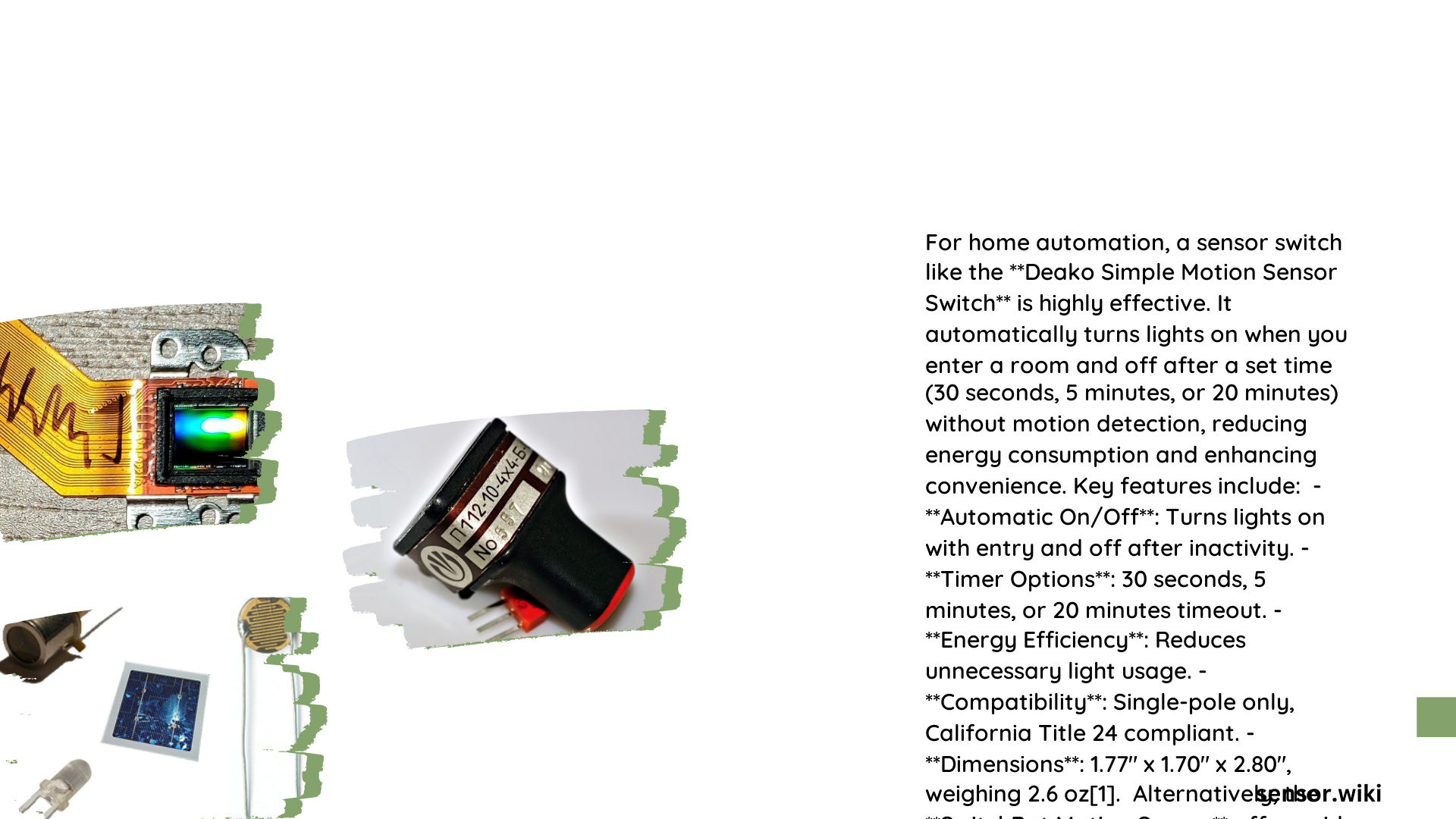Home automation has revolutionized how we interact with our living spaces, and sensor switches stand at the forefront of this technological transformation. These intelligent devices leverage advanced motion detection and environmental sensing technologies to create responsive, energy-efficient environments. By automatically controlling lighting, temperature, and security systems, sensor switches offer homeowners unprecedented convenience, enhanced security, and significant energy savings through intelligent, adaptive mechanisms.
What Are Sensor Switches in Home Automation?
Sensor switches represent sophisticated electronic devices designed to detect movement, light levels, temperature, and other environmental parameters. Unlike traditional manual switches, these smart components autonomously manage electrical systems based on predefined conditions and user preferences.
Types of Sensor Switches
| Sensor Type | Detection Method | Primary Function |
|---|---|---|
| PIR Sensors | Infrared Radiation | Motion Detection |
| Ultrasonic Sensors | Sound Wave Reflection | Occupancy Tracking |
| Microwave Sensors | Electromagnetic Waves | Precise Movement Tracking |
How Do Sensor Switches Enhance Home Automation?

Energy Efficiency Benefits
Sensor switches deliver remarkable energy conservation through:
- Automatic light shutdown in unoccupied rooms
- Precise motion-triggered illumination
- Adaptive brightness adjustments
- Reduced unnecessary electrical consumption
Smart Home Integration Capabilities
Modern sensor switches offer:
- Compatibility with major smart home platforms
- Wireless connectivity (Wi-Fi, Bluetooth)
- Remote control via smartphone applications
- Integration with voice assistants like Alexa and Google Home
What Factors Should You Consider When Selecting Sensor Switches?
Key Selection Criteria
- Detection Range: Evaluate coverage area
- Power Requirements: Check voltage compatibility
- Communication Protocols: Ensure smart home system integration
- Installation Complexity: Assess professional installation needs
What Are Common Challenges in Sensor Switch Implementation?
Potential Implementation Obstacles
Homeowners might encounter:
- Compatibility limitations with existing electrical systems
- Initial setup complexity
- Potential signal interference
- Higher upfront investment compared to traditional switches
How Much Do Sensor Switches Cost?
Price Range Analysis
| Category | Price Range | Features |
|---|---|---|
| Entry-Level | $20 – $40 | Basic motion detection |
| Mid-Range | $40 – $80 | Advanced sensing, limited smart home integration |
| Premium | $80 – $150 | Full smart home compatibility, multiple sensor types |
Best Practices for Sensor Switch Installation
Recommended Implementation Steps
- Conduct thorough home electrical system assessment
- Select sensors compatible with existing infrastructure
- Plan strategic sensor placement
- Ensure proper calibration
- Test functionality across different scenarios
Future of Sensor Switches in Home Automation
Emerging trends indicate continued technological advancement, including:
- Enhanced AI-driven predictive behaviors
- More granular environmental sensing
- Improved energy efficiency algorithms
- Seamless cross-platform compatibility
Conclusion
Sensor switches represent a transformative technology in home automation, offering unprecedented control, efficiency, and convenience. By understanding their capabilities and strategic implementation, homeowners can create intelligent, responsive living environments.
